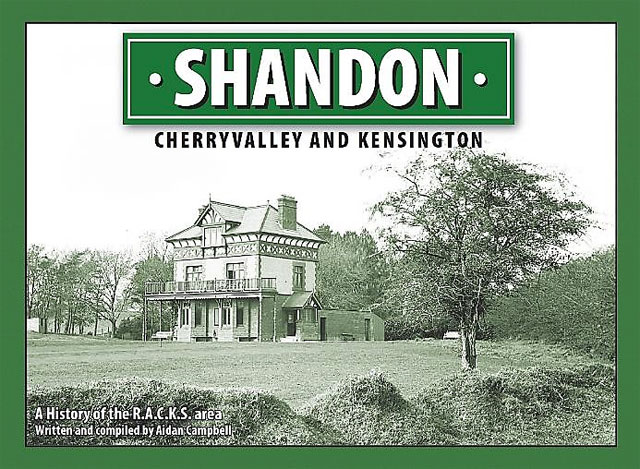Bangor Historical Society concluded its 2023-24 season with its AGM and a talk by Aidan Campbell on 11 April. Society officers gave their reports and all were re-elected including chairman Ian Wilson, secretary Ronnie McClements and treasurer Adrianne Brown.
Aidan Campbell based his talk around the Shandon area of East Belfast. He showed a photograph of Shandon Mound which dates back to Norman times and John de Courcy. The name Shandon means old fort. The mound was part of the Norman Castle or motte. Close by is the site of the “Capella de Dundela Knock Columcille”(the chapel of the fort on the hill of Columba). St Columba is supposed to have passed this way on his journey to Movilla. The surrounding graveyard dates back to the 13th century and stands on the hill at the end of Knockmount Park.
In the 1890s the Shandon Park Estate Company began to develop the Knock area. Much of this land belonged to Sir Thomas McClure who lived in Belmont House. This building had been sold and Campbell College now stands on the site. Mr Campbell commented that plush English names were used for the new developments at Knock eg Sandown Road, Kensingtom Road and Wandsworth Road.

He the began to talk about individual houses and other prominent buildings and show photographs of them. Rath House at 22 Shandon Park was the home of the Webb family who owned the Ards Weaving Company Ltd. Another photograph showed a train at Knock Station in 1895 – this was part of the BCDR line. Nearby was the club house of the original Knock Golf Club; later it moved to Shandon Park. Shandon Park had been mentioned as a possible site for a new cemetery to replace the City cemetery. This plan was not carried out and instead a new cemetery was built at Dundonald.
Among the houses mentioned by Mr Campbell was Beaconsfield, the first one in Kensington Road. It was later bought by the Marie Curie organisation. It was knocked down and replaced by a nursing home. No. 4 Pasadena Avenue once belonged to Robert Ponsonby Staples, an artist who later inherited the ancestral home, Lissan House. Many of the other ones in the area no longer exist. They were demolished and replaced by multiple houses. The chairman thanked Mr Campbell for a very interesting talk.
Later there was an opportunity to purchase some of Mr Campbell’s books, especially the one on the Shandon area. These books contain detailed accounts of the houses and their occupants as well as historic photographs. The money raised goes to several charities.
